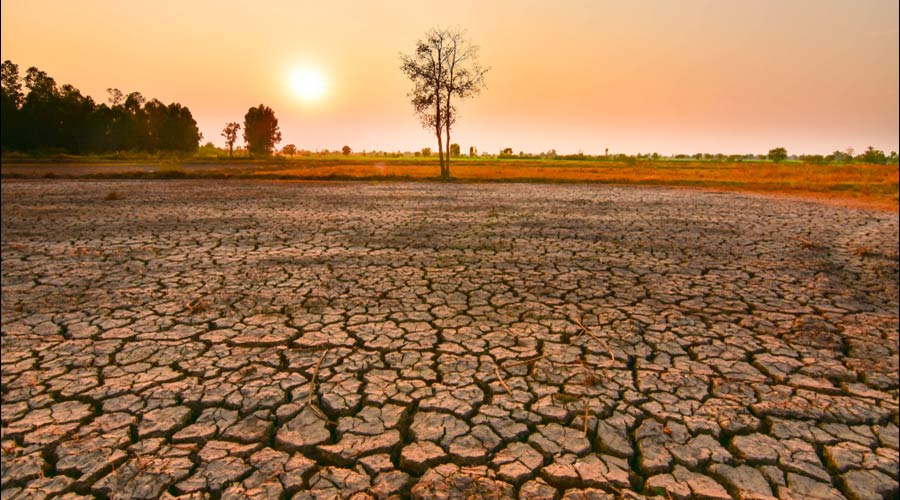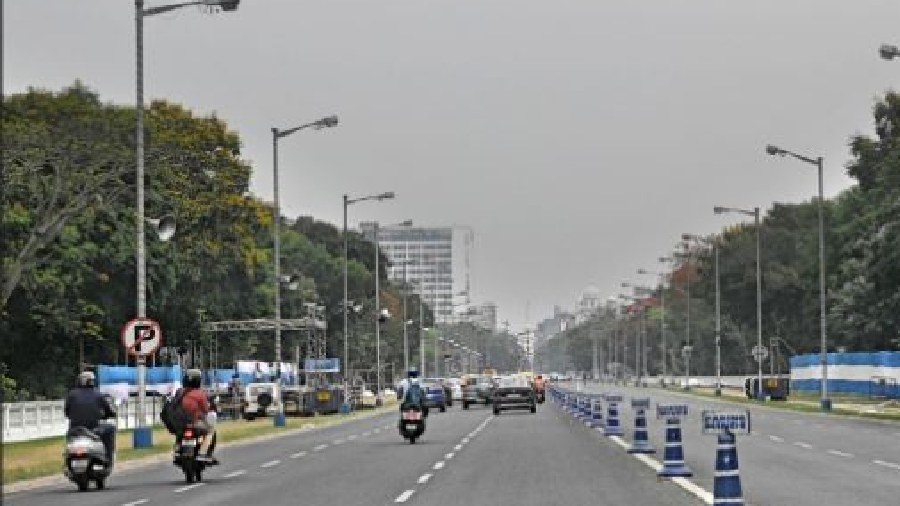Kolkata and its adjoining areas in south Bengal, reeling under an acute heat spell, may face a far worse condition unless global and local emissions are curtailed, environment scientists said referring to a recent UN report.
On Wednesday, Kolkata’s maximum temperature was 40.6 degrees Celsius, 5 degrees above normal. On Thursday, the Celsius touched 40.7 in Kolkata, 41.5 in Salt Lake and 41.7 in Dum Dum.
A report prepared by the Intergovernmental Panel for Climate Change (IPCC), a UN body, shows that in the worst possible situation with no significant emission cuts in the near future, the annual mean temperature of Kolkata may increase by 4.5 degrees by 2080 compared with the pre-industrial period benchmark between 1850 and 1900. The maximum temperature may shoot up to 49.6 degrees.
The pre-industrial period is considered the benchmark as anthropogenic emissions were absent then.

According to the IPCC report, several south Bengal cities will likely face a similar Celsius rise towards the end of the century if there were no significant emission cuts. Bankura, Purulia, Santiniketan and Asansol may reel under a maximum temperature of 51.4 degrees.
“Though the ongoing heat wave is not entirely unusual as April is always the hottest month as it hardly sees any thunderstorms, the minimum temperature has been consistently rising throughout the year, which is definitely a tell-tale sign of climate change,” said G.K. Das, head of IMD Kolkata.
Other IMD experts accepted that the summer period is getting stretched.
“Incidentally, the average Celsius has only increased about 1 degree till now. The major part of the temperature rise has been happening from the mid-1990s. The period has seen major environmental destruction and that is impacting the city’s weather,” said an environment expert.
The worst possible situation, called Representative Concentration Pathway (RCP) 8.5, accounts for “a 3-4°C global average temperature rise”.
However, even the best possible emission situation, called RCP 2.6, which aims to keep the global temperature rise under 2 degrees Celsius, the city’s average temperature rise will by 1.6 degrees during 2080-2100.
In RCP 4.5, which considers a 2 degree rise in global temperature, the city’s average temperature is set to rise by 2.4 degrees. It clearly shows Kolkata is slated to warm up faster compared with the global benchmark.
The report also predicted that the city may experience a temperature of 35 degrees or more for 150 days a year within a few decades from now.
“We have analysed the IPCC report and found that about 80 per cent rise in the city’s temperature is slated to have happened after 2014,” said Aniruddha Mukherjee, head of the environmental science department at Calcutta University.
According to the IPCC report, Kolkata recorded the highest rise in surface air temperature among the studied global cities and regions during 1950-2018. The city’s average temperature rose 2.6 degrees during the period, followed by Tehran (2.3 degrees) and Moscow (1 degree).
The report shows that urbanisation has contributed to a rise in the city’s temperature, saying “urban centres and cities were warmer than the surrounding rural areas because of the urban heat island effect”.
Urban heat island effect arises from several factors, including reduced air circulation and heat being trapped because of tall buildings standing close to one another, heat generated from human activities, presence of too many concrete structures and inadequate vegetation.
“Kolkata has all the required elements. It has high concretisation and extremely limited vegetation,” said environment activist Subhas Datta. He pointed out that the city’s greenery quotient is one of the poorest in the country.
“We can say with high confidence that extreme heat and heat-wave phenomena are going to increase,” said Subimal Ghosh, scientist, Indian Institute of Technology, Mumbai, who is one of the lead authors of the IPCC report.

